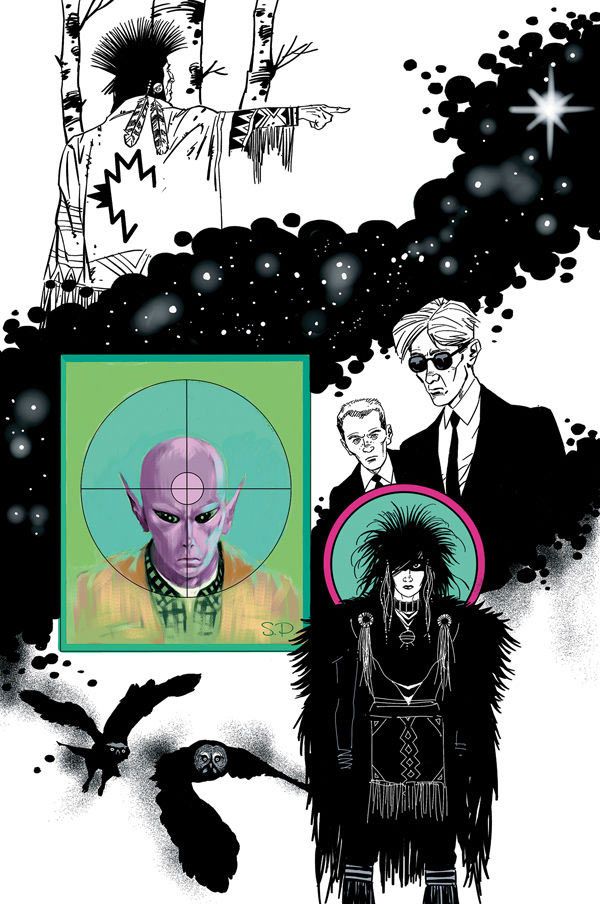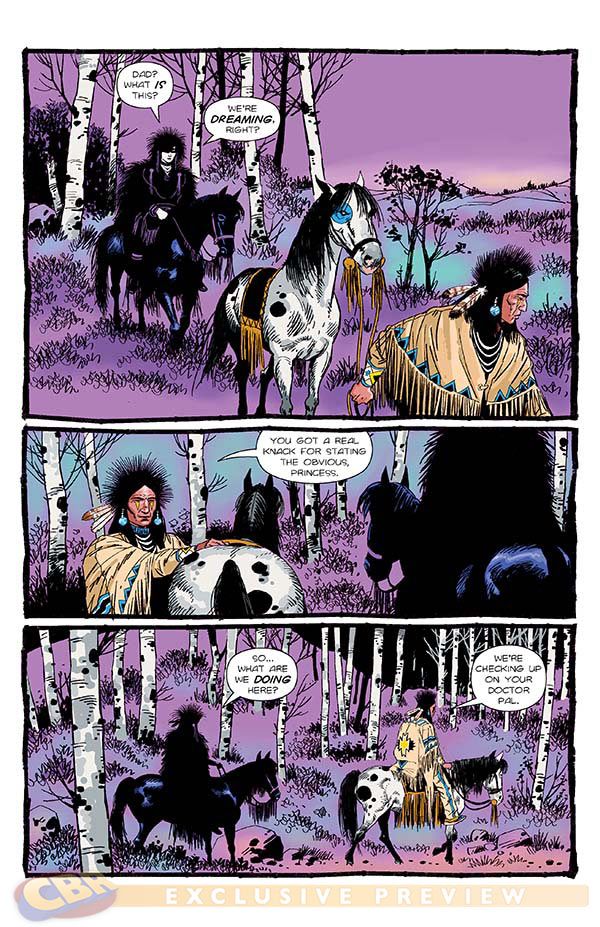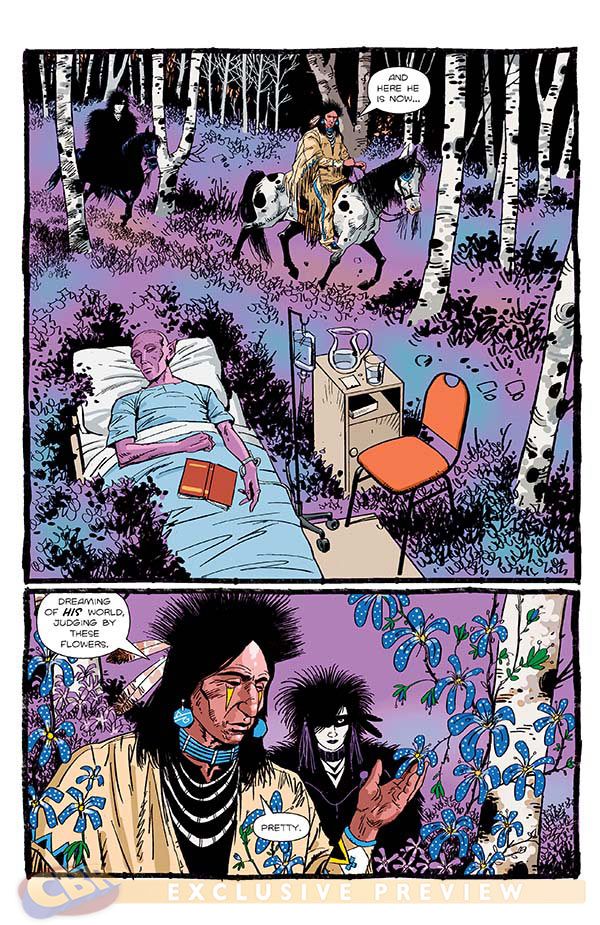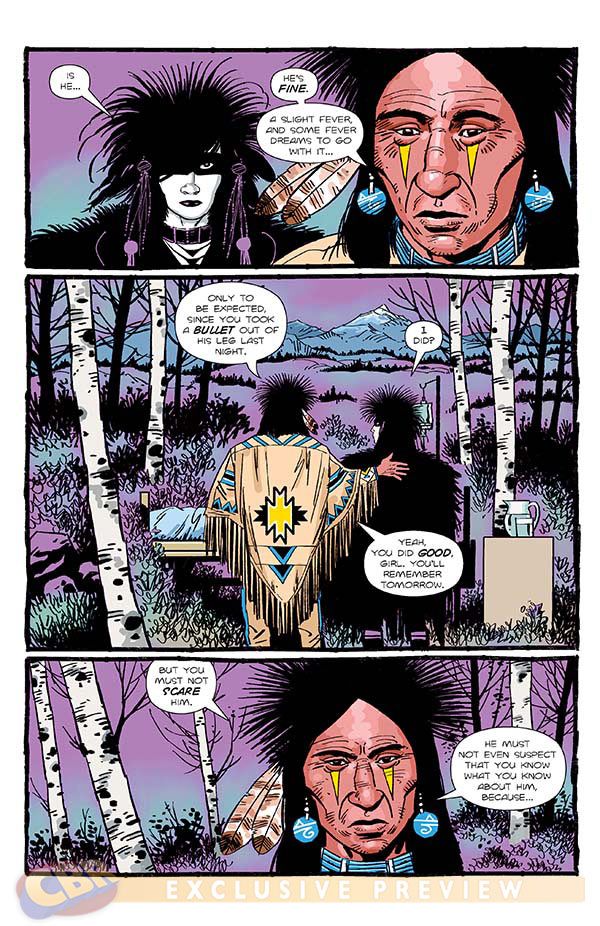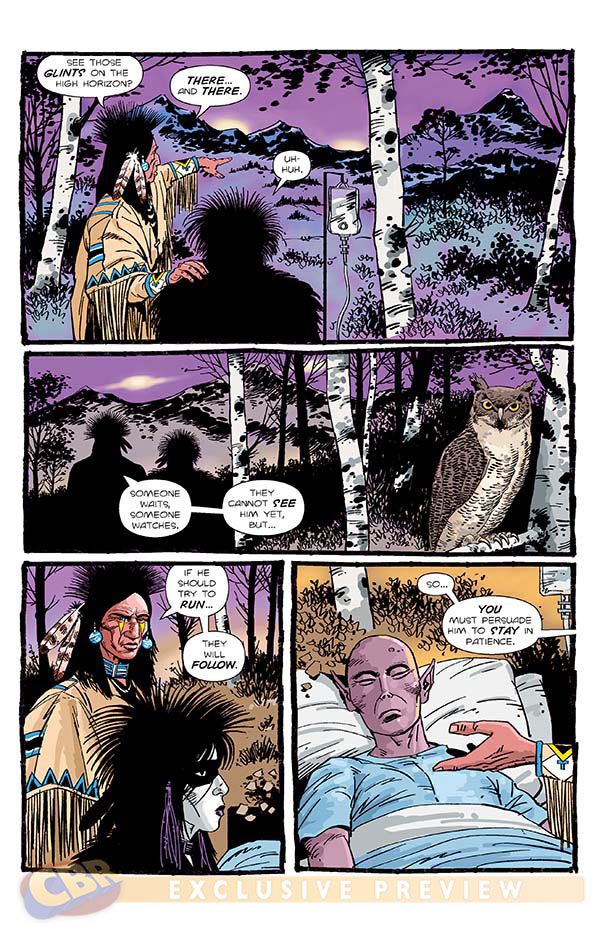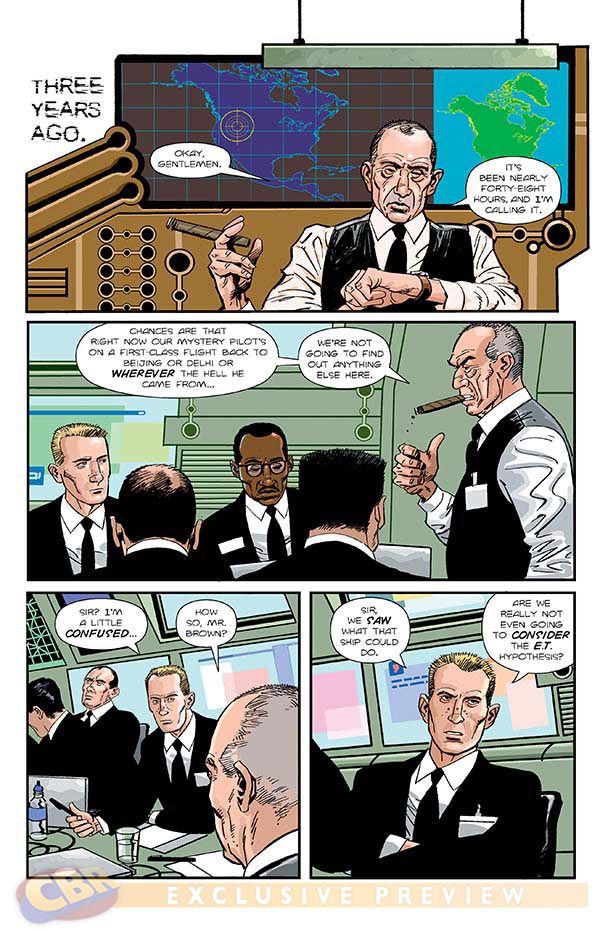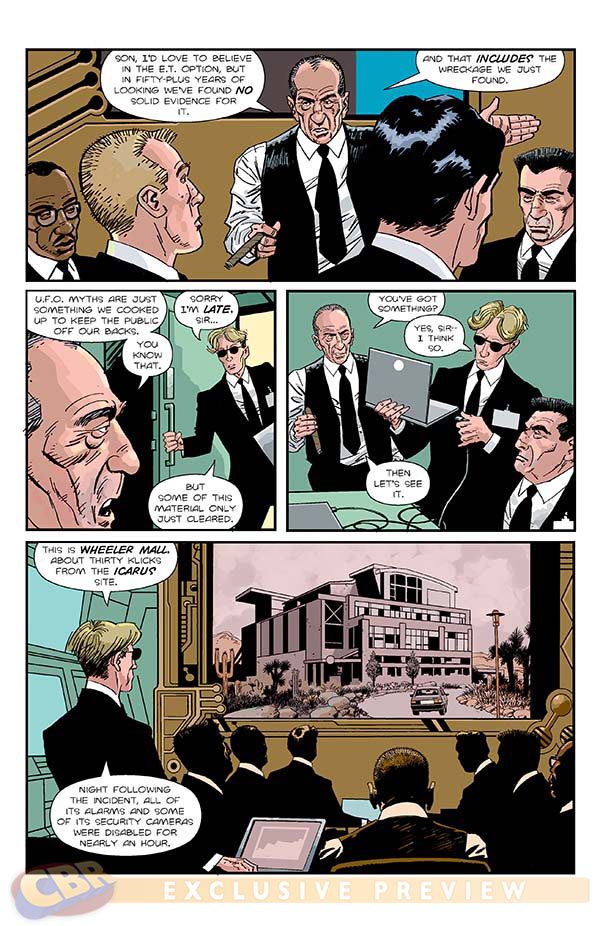In 2012, writer Peter Hogan and artist Steve Parkhouse introduced readers to Dr. Harry Vanderspeigle and the small town of Patience in "Resident Alien" from Dark Horse Comics. Typically, things are pretty quiet in Patience and the town welcomed Harry as a new neighbor with little hesitation. However, Harry is not a typical resident -- he is, in fact, an otherworldly alien stranded on Earth, his non-human features cloaked by advanced technology.
Now, with one solved murder mystery under his belt and local Patience nurse Asta hiding her suspicions of his true identity, Harry is back in Hogan and Parkhouse's "Resident Alien: The Suicide Blonde." The four issue miniseries from Dark Horse begins with #0 releasing August 14, with issue #1 coming September 11. "Suicide Blonde" follows Harry as he becomes embroiled in another mysterious death -- only this time the case is personal.
CBR News spoke with Hogan about the second installment in the "Resident Alien" saga, touching on where it leads Harry and his newfound friends. Plus, exclusive art by Parkhouse!
"We'll be seeing more of Harry's back-story and the fact that the government is aware of his presence on Earth -- they're trying to track him down," said Hogan. "As for the crime case angle, this time it concerns a girl who's committed suicide, except Harry's convinced she was murdered. The problem for Harry is if it is murder, the main suspect is someone he knows and cares about -- he has to get involved to prove their innocence."
In the first miniseries, Harry became tentative friends with Asta, who lives and works in Patience and is a member of the local Native American community -- her father issued several cryptic warnings about Harry. She soon realizes Harry isn't what he seems to be, but for now she's kept the secret to herself.
"Harry's still unaware Asta knows as much about him as she does," said Hogan. "Investigating this case means he'll have to leave Patience briefly, which is something Asta's dad has warned her could lead Harry into big trouble. So, she tags along for the ride and her role in this is a protective one."
While the science fiction and mystery elements stand out in "Resident Alien," the story is, at its heart, a very human story -- people struggling to manage their lives and relationships in a difficult world. Harry is, at his core, a man alone in a strange place, estranged from the woman he had to leave behind. He expresses the weight of loneliness in the story's quiet moments, and some glimmer of flirtation exists between him and Asta.
"You'll see more of Harry's alien love, but not until the third series," said Hogan. "As for Asta -- time will tell. The strange thing, whether their relationship turns into a romantic one or not, is the idea actually doesn't seem that outlandish. Whatever happens -- or doesn't happen -- between them, it'll come to pass very slowly. We hope to keep going for a good long time -- I called the town Patience for a reason!"
Hogan describes his working relationship with artist Steve Parkhouse as solid and longstanding, allowing trust in each other's craft.
"Mostly the process is all in the script and how Steve handles it," said Hogan, "but we do chat on the phone from time to time. We've worked together quite a bit, and known each other for over twenty years, so we mostly trust each other to get on with it. For my side, I rely on him to come up with the goods, and it's always a joy to find more stunning artwork from him in my inbox."
With "Resident Alien," Hogan has taken the common trope of the alien invasion and turned it on its head. While not without precedence, it's fairly uncommon for the invader to be, essentially, a nice guy who's suffered a bad break. Much of the inspiration for the story Hogan credits to Parkhouse.
"This all began because Steve wanted to do a story about aliens, and 'Resident Alien' is what I came up with," said Hogan. "I thought the concept of aliens being monsters and invaders had become stale, so I tried doing something different. Having him be basically a nice guy who's been shipwrecked here and is trying to make the best of it makes for an interesting view of humanity. The key point is that to Harry, it's us who are the aliens -- and it's that aspect which seems to have touched a nerve with readers. Obviously, I'm very pleased people like Harry so much."
While flipping the common space-invader genre, Hogan has also hooked a number of other genres into his sci-fi story, building a blend of tropes adding up to something larger and more down-to-earth than the individual parts. "Resident Alien" has elements of classic characters: the shipwrecked sailor, the invader, the private eye, the fugitive and the love-lost stranger. There is also a nod to that classic small-town strangeness, like "Twin Peaks," though Hogan cites other influences first.
"I always loved 'Twin Peaks,' so I can't deny it's an influence," Hogan said. "For the story to work I needed Harry to be in a small town, and obviously Twin Peaks is one of the most memorable fictional small towns ever created. Patience is nowhere near as strange as that, and so the secrets to be found there are more likely to be personal ones, not a mind-blowing web of weirdness. Other influences would include 'The Man Who Fell To Earth' and the old 'My Favorite Martian' TV show -- I haven't watched either of them for twenty years or more.
"I read thrillers more often these days -- not to steal anything, just to get into that mindset -- and they tend to be old-fashioned ones," Hogan said. "Rex Stout, Dorothy Sayers and Agatha Christie -- they get your mind working in a certain way."
Sure, "Resident Alien" is a science fiction story involving a crash-landed extraterrestrial from a far-away planet, but in many ways it's a science fiction story of another era, at once contemporary and old-fashioned -- like an old pulp-novel. It's a science fiction about, ultimately, what it might mean to be human.
"We live in a science fiction world now," Hogan said. "There are things we take for granted on a daily basis that would have seemed like wild fantasy twenty years ago. Writing any kind of sci-fi involving technology has definitely become more difficult, but none of that affects Resident Alien. In fact, it could probably have been written fifty years ago or fifty years from now, because it's mainly a story about people, one of whom just happens to be a shipwrecked alien."
The challenge in "Resident Alien," says Hogan, lies in the crafting of a well-formed mystery in the span of four issues, while balancing the many narrative elements at work in the series.
"As for murder mysteries -- people have been killing each other for all kinds of reasons for thousands of years, so there's always plenty to draw on," he said. "The truly hard part is to make it something that can be resolved in a satisfying way in just four issues, given that we're trying to keep lots of other plates spinning at the same time: Harry's past, his relationships with other characters, the government pursuit and so on. I've noticed many hour-long TV detective shows have exactly the same problem -- there are hardly ever many red herrings because they just don't have the time to fit them in.
"Obviously," Hogan continued, "there's also a limit to how much murder we can get away with in one small town before it starts to look ludicrously implausible -- but there are always other kinds of mystery that might rear their heads, and there's a whole wide world outside of Patience. Harry being a curious kind of guy might decide to go off and explore it."
Peter Hogan and Steve Parkhouse's "Resident Alien: The Suicide Blonde" #0 goes on sale August 14 from Dark Horse


